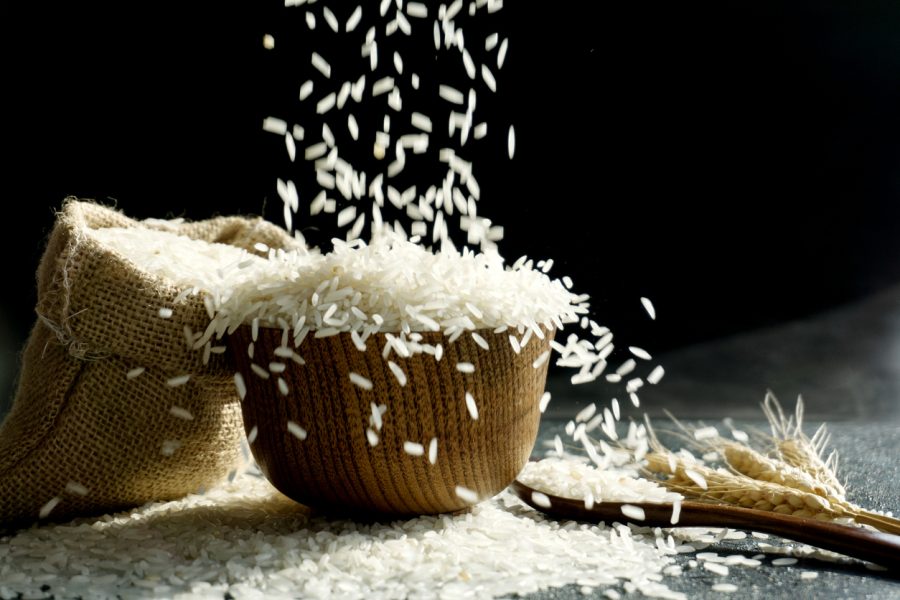
Explained: Why India banned rice export and how it will affect the world

The Union government on Thursday banned exports of non-basmati white rice. The government has amended the export policy from “free with export duty of 20%” to “prohibited” with immediate effect.
However, there would be no change in export policy of par-boiled non-basmati rice and basmati rice, which forms the bulk of exports, the food ministry said in a statement. Non-basmati white rice constitutes about 25 per cent of total rice exported from the country.
“Export policy of non-basmati white rice (semi-milled or wholly milled rice, whether or not polished or glazed)…is amended from free to prohibited,” the directorate general of foreign trade (DGFT) said in a notification.
Also read: India’s non-basmati rice exports rise 109% in 8 years to $6.11 billion: Govt
Why did the government impose ban on exports of non-basmati white rice?
According to the government, the move is aimed to ensure lower prices and adequate availability in the upcoming festival season. “The domestic prices of rice are on an increasing trend. The retail prices have increased by 11.5 per cent over a year and 3 per cent over the past month,” the statement said.
Earlier, the government had imposed an export duty of 20 per cent on non-basmati white rice on September 8, 2022 to control the prices as well as ensure availability in the domestic market. However, the export of this variety increased to 42.12 lakh tonnes in September-March period of the 2022-23 from 33.66 lakh tonnes during September-March period of the previous fiscal.
In the first quarter of the current fiscal, about 15.54 lakh tonnes of white rice was exported against only 11.55 lakh tonnes in the year-ago period, which means an increase by 35 per cent. “This sharp increase in exports can be ascribed to high international prices due to geopolitical scenario, El Nino sentiments and extreme climatic conditions in other rice producing countries, etc,” the statement said.
Alarmed by the trend, the government stepped in to ban the exports in a bid to ensure adequate stocks and low prices in view of the approaching festive season in India. The move may also be seen in light of the fact that the countdown to assembly elections in major states like MP, Rajasthan, Chhattisgarh and Telangana as well as Lok Sabha elections 2024 has already begun.
Also read: Rice farmers must adopt climate-resilient varieties, practices faster: Expert
How will India’s move to ban rice export impact the world?
India is the world’s second-largest rice producer after China and accounts for more than 40% of world’s rice exports. The move has triggered an instantaneous increase in prices of rice in global markets.
Industry experts claimed that the ban was expected to inflate the prices of food products globally which are already driven up by Russia’s invasion of Ukraine last year and erratic weather. China’s paddy crop has also suffered extensive damage owing to inclement weather.
Rice is a staple for more than 3 billion people, and nearly 90% of the water-intensive crop is produced in Asia, where the El Nino weather pattern usually brings lower rainfall. Global prices are already hovering at their highest level in 11 years.
The major markets for Indian rice are African countries. China, India, Thailand, Vietnam, and Pakistan are the leading producers and major global suppliers of rice. According to media reports, Thailand and Vietnam don’t have enough inventories to plug the shortfall. Experts say African buyers would be most affected by India’s decision.
According to reports in the US, rice bags of all varieties flew off the shelves as anxious Asian communities, for whom rice is a staple, thronged the stores. The outlets of major brands also saw a scramble for the same. All varieties of rice including basmati were sold out in a few hours on July 21. In states such as Texas, which has a large Asian population, prices have reportedly been hiked. A buyer in Texas said that he bought a 20-pound bag of white rice at $34.
Also read: India defends its decision to ban rice, wheat exports at WTO
Has crop damage in the recent spell of rainfall also prompted the government move?
Erratic weather conditions have certainly contributed to the government decision to ban rice exports. While the late arrival of the monsoon led to a large rain deficit till mid-June, heavy rains since the last week of June have caused significant damage to crops, primarily in Punjab and Haryana.
As per an estimate, 2.4 lakh hectares of area under paddy cultivation has been affected in Punjab alone and crop will be resown over 83,000 hectares of land. However, farmers will have to wait for waters to recede so they can replant. In Haryana too, paddy crop spread over 1.5 lakh hectares of land in seven districts is submerged. This doesn’t augur well as the two states together contribute about 20% of the country’s total rice production.
In other major rice-growing states, farmers have prepared paddy nurseries but have been unable to transplant the seedlings due to inadequate rainfall. The government was hoping that the area under rice cultivation would increase after it had raised MSP for paddy, but farmers so far have planted paddy on 6% lesser area as compared to 2022.


